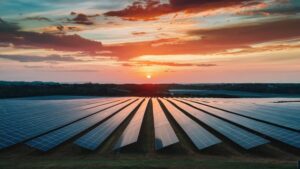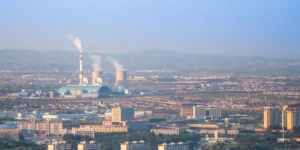Australia’s Landmark 6.4 GW Renewables Tender Results Announced

Dec 11, 2024 09:10 AM ET
- Australia’s record-breaking renewable energy tender launches 19 projects, set to power over 3 million homes and speed up the shift away from coal.

Australia has selected 19 renewable energy projects in its largest tender to date, aiming to accelerate the transition from coal-fired power. The chosen projects, which encompass wind, solar, and battery technologies, are set to deliver a total capacity of 6.4 gigawatts—enough to supply over 3 million households. Notable participants include Neoen SA, BP Plc, and Squadron Energy, led by billionaire Andrew Forrest.
The tender received 84 bids and marks a significant step within the government’s Capacity Investment Scheme, which is designed to foster the development of 32 gigawatts of renewable capacity by 2030 through revenue guarantees. Energy Minister Chris Bowen announced the results on Wednesday, highlighting Australia’s commitment to renewable energy expansion.
What impact will Australia’s largest renewable energy tender have on its energy transition goals?
- Scaling Up Renewable Capacity: The selection of 19 renewable energy projects, totaling 6.4 gigawatts, significantly contributes to the Australian government’s goal of achieving 32 gigawatts of renewable energy capacity by 2030. This move highlights a serious commitment to diversify the energy portfolio and increase the share of renewables in the national grid.
- Reduction of Coal Dependency: By accelerating the transition from coal-fired power to renewable sources, Australia aims to reduce greenhouse gas emissions significantly. With coal regarded as a major contributor to climate change, this tender will help in moving towards cleaner energy sources and mitigates the impact of coal on air quality and public health.
- Economic Development: The projects included in the tender are likely to create thousands of jobs in construction, operation, and maintenance of renewable energy infrastructure. This growth in the renewable sector can stimulate local economies and provide long-term employment opportunities.
- Increase in Energy Security: Expanding the renewable energy sector enhances energy security by reducing reliance on fossil fuels, especially in light of global energy price fluctuations. A diversified energy mix can provide greater stability and resilience to the energy grid.
- Investment in Technology Innovation: The participation of major players like Neoen SA, BP Plc, and Squadron Energy suggests substantial investment in technological advancements. This competition can drive innovation in renewable technologies, such as more efficient solar panels and advanced battery storage solutions, further accelerating the energy transition.
- Grid Stability and Integration: The integration of large-scale renewable projects requires advancements in grid management and energy storage solutions. These projects can help develop a more responsive grid, capable of handling intermittent energy sources and ensuring a consistent power supply.
- Environmental Benefits: The shift to renewable energy sources is essential in addressing climate change and promoting sustainability. These projects can play a crucial role in reducing carbon emissions and protecting Australia’s unique ecosystems.
- Support for Renewable Policy Framework: This tender aligns with and strengthens Australia’s regulatory and policy frameworks aimed at climate commitments, such as the Paris Agreement. It showcases the government’s proactive approach in meeting its international obligations while fostering local renewable energy industries.
- Community Engagement: As these projects progress, engaging with local communities can foster greater acceptance of renewable energy initiatives. Community involvement and transparency can lead to better project outcomes and address any concerns related to land use or environmental impacts.
- Future Projects and Transition Strategy: The success of this tender may pave the way for future renewable energy tenders and projects. It can serve as a model for other states and territories in Australia, reinforcing a collaborative national approach to the energy transition.
- Potential Challenges: While the tender marks a significant advancement, challenges such as regulatory hurdles, land acquisition, and community opposition must be navigated to ensure timely project deployment and integration into the grid for effective power generation.

SOLAR DIRECTORY
Solar Installers, Manufacturers




